Celebrate St. Patrick’s Day in NYC 2025
Discover 10 ways to celebrate St. Patrick's Day in NYC this year, from eye-opening tours to Irish treats!

A new exhibit at the New-York Historical Society resurrects lost landmarks, vistas, and communities of a bygone New York City!

A hallmark of New York City is that it is always changing. As new towering buildings go up, others must come down. And it’s not just buildings that are lost. Natural vistas, modes of transportation, pastimes, and whole communities disappear and evolve as time progresses. In Lost New York, the latest exhibition at The New-York Historical Society, these bygone elements of life in New York City are resurrected through treasures from the museum’s collection and first-hand accounts of New Yorkers who experienced them.
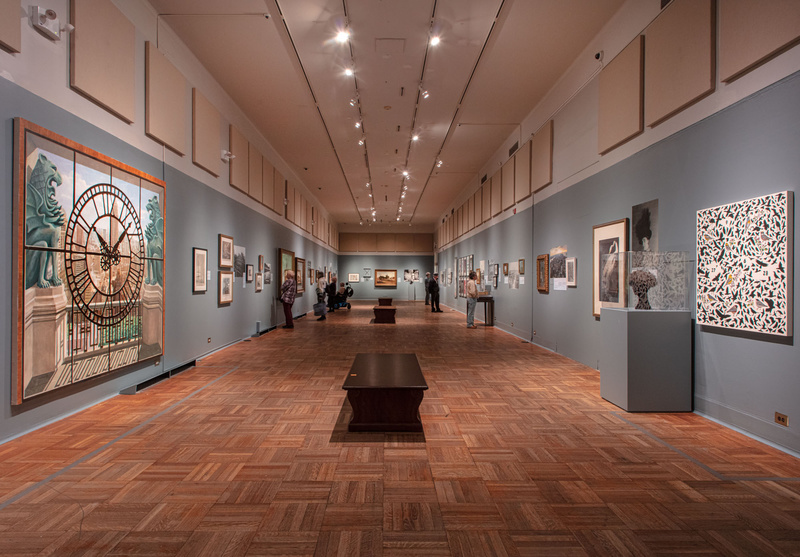
Lost New York features more than 90 paintings, photographs, objects, and lithographs along with observations from New Yorkers of the places depicted. Visitors can hear about the lost Hippodrome Theatre from a Broadway carpenter, learn about the demolished Harlem Renaissance monument Lift Every Voice and Sing from a choir director, and mourn the loss of Penn Station with Untapped New York’s very own Chief Experience Officer and Penn Station expert Justin Rivers who is quoted in the exhibit.
On June 15th Untapped New York Insiders are invited to explore Lost New York on an exclusive guided tour! Not an Insider yet? Become a member today with code JOINUS to get your first month of membership for free and gain access to a variety of members-only in-person and virtual experiences. Registration for this event opens on June 1st at 12pm ET.
Here, we look back at five of our favorite lost landmarks, from the dazzling Crystal Palace that mysteriously burned down to the original Met Opera which caused a stir in Gilded Age New York.
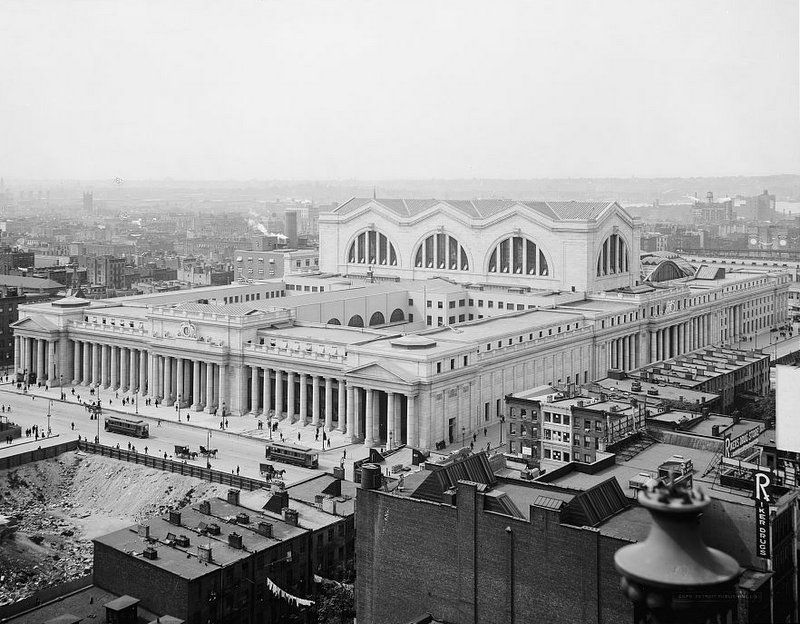
More than 20 stone eagles and other bits of sculpture, some metal work inside the station, and a neighboring power plant building are a few of the remnants that still exist from New York’s original Pennsylvania Station. Opened in 1910 and infamously demolished in 1963, the original Penn Station was designed by the illustrious architecture firm of McKim, Mead, and White. The sprawling Beaux-Arts structure was largely considered a masterpiece, though it only stood for 53 years.
The destruction of Penn Station was such a traumatic architectural loss that it spurred the creation of the New York City Landmarks Preservation Commission. Over the years, pieces of the station have popped up across the country, from lampposts found in the crypt under St. John the Divine to Adolph Alexander Weinman’s Day and Night sculptures that now grace a fountain in Kansas City, Missouri. The giant train station was torn down in 1963 and replaced by Madison Square Garden. Visitors to Lost New York can see the interior of Penn Station as it appeared in 1906 in a watercolor by Jules Crow.
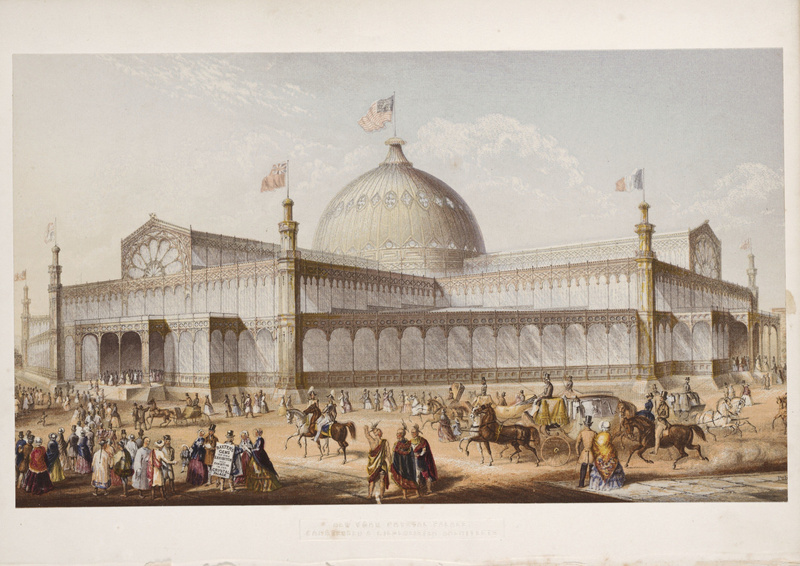
The World’s Fairs of 1939-40 and 1964-65 which took place in Flushing Meadows-Corona Park tend to get a lot of attention, but the City’s first global exposition, the Exhibition of Industry of All Nations, took place in Manhattan way back in 1853. Two distinct structures were built for the occasion, the Crystal Palace and Latting Observatory. Both stood next to the Croton Reservoir Distributing Center (where the New York Public Library is now) at the site of what would later become Bryant Park.
Architects Georg J. B. Carstensen and Charles Gildermeister drew inspiration for New York’s Crytal Palace from the Crystal Palace built for the Great Exhibition of 1851 in Hyde Park, London. Cartensen and Gildermeister created a stunning steel, iron, and glass structure in the shape of a Greek cross topped with a large glass dome at the center. Visitors to the fair were awed by the gleaming structure itself and the innovative wonders exhibited inside, from the Otis elevator to new forms of photography.
After the fair closed in November 1854, the Crystal Palace was leased as a special events space. It stood for just four more years until a raging fire took it down. Though many theories for how the fire started have been proposed, from arson to a gas pipe rupture, no official cause was ever determined.
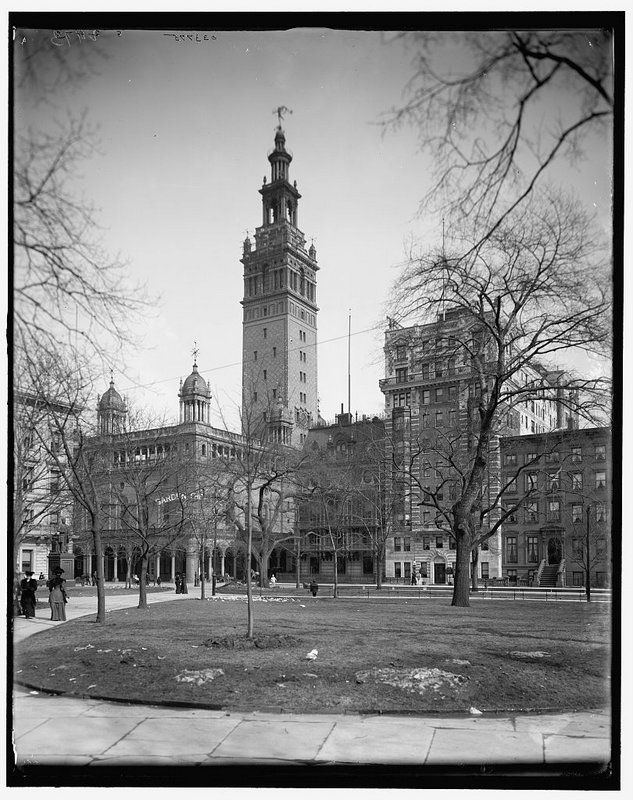
Though the Madison Square Garden we know today replaced another lost structure in the 1960s, there were three lost Madison Square Gardens that came first. The very first MSG stood from 1879 to 1889 at the northeast corner of Madison Square Park (hence the name). The next iteration of the Garden was the most splendid and notorious. Designed by Stanford White and in operation from 1890 to 1923, this new building had a Beaux-Arts Moorish design with a distinctive tower, modeled after the Giralda in Spain. A scandalously nude, golden statue of Diana by August Saint-Gaudens stood at the top of the tower.
The rooftop garden at the venue was another feature of White’s design that Gilded Age New Yorkers loved. It is also where White met his own demise. In 1906, while enjoying a musical performance on the roof, White was murdered by Harry K. Thaw, a jealous rival in a love triangle that encompassed Thaw, White, and the young model Evelyn Nesbit.
White’s Garden was demolished in 1924 and replaced by the headquarters of New York Life Insurance designed by Cass Gilbert. This building still stands today. MSG moved to the West Side in its third iteration, where Marilyn Monroe sang Happy Birthday to John F. Kennedy.
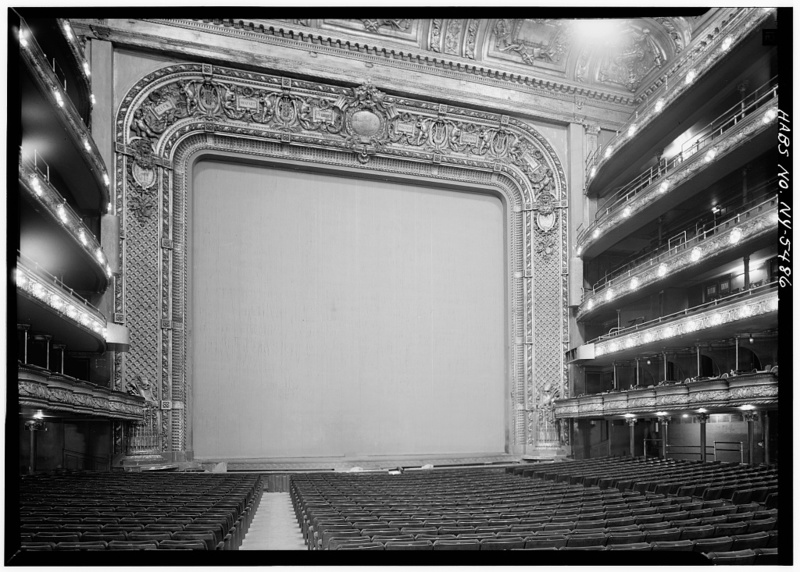
The opening of the original Metropolitan Opera House was just as controversial as its demolition. The contentious construction and commencement of the first Met Opera House was a major storyline in HBO’s period drama The Gilded Age. In the show, as in real life, New Yorkers of the upper class battled for cultural control through dueling opera houses, the old-money Academy of Music vs. the new-money Met.
J. Cleveland Cady designed the original Met Opera House at West 39th Street and Broadway in an Italian Renaissance style. It opened in 1883. Architects Carrere and Hastings redesigned the lavish interiors after a fire ravaged the structure in 1892. The pair created a gold auditorium with the largest proscenium in America at the time. They also restored the auditorium’s Diamond Horseshoe box seats where wealthy families of the Gilde Age like the Vanderbilts and Astors sat to see the show and to be seen by other audience members.
By the 1960s, the opera house had outgrown its home. Management was lured uptown to a new development at Lincoln Center, but theater enthusiasts and preservationists didn’t want to lose the original opera house. Despite impassioned efforts to save the historic building through landmark designation, the structure was demolished and replaced by the 40-story World Apparel Center in 1967. In Lost New York, hear the recollection of a woman who attended a performance at the Old Met Opera House in 1939. Uncover the stories of more lost opera houses on the Untapped New York Podcast!
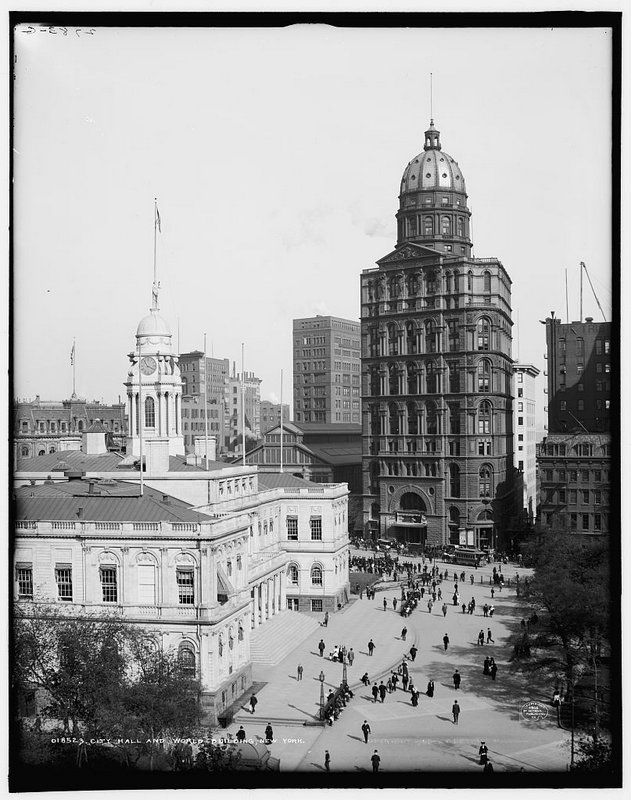
In 1890, architect George Post’s New York World Building became the first building in New York to surpass the spire of Trinity Church. At 309 feet, it held the title of tallest building in the world until 1894. Standing prominently at 99 Park Row, the building was commissioned by Joseph Pulitzer to serve as headquarters for The New York World newspaper. In the late 19th century, its neighbors on what was known as Newspaper Row included the headquarters of papers like The New York Times, The New York Tribune, and The New York Sun.
Pulitzer’s office was located in the building’s copper dome where he had unobstructed views out to Brooklyn, Governor’s Island, and Long Island. Printing presses were located in the basement and there was retail space on the first and mezzanine floors. The remaining upper floors were used for news offices and other commercial tenants. In 1955 The World Building was demolished to accommodate an expanded entrance ramp to the Brooklyn Bridge.
Lost New York is on view through September 29, 2024. Don’t miss an exclusive guided tour of the exhibit with Untapped New York Insiders on June 15th! Use code JOINUS and get your first month of Insider membership for free. Registration for this event opens on June 1st at 12pm ET.
Next, check out Lost Department Stores of NYC
Subscribe to our newsletter